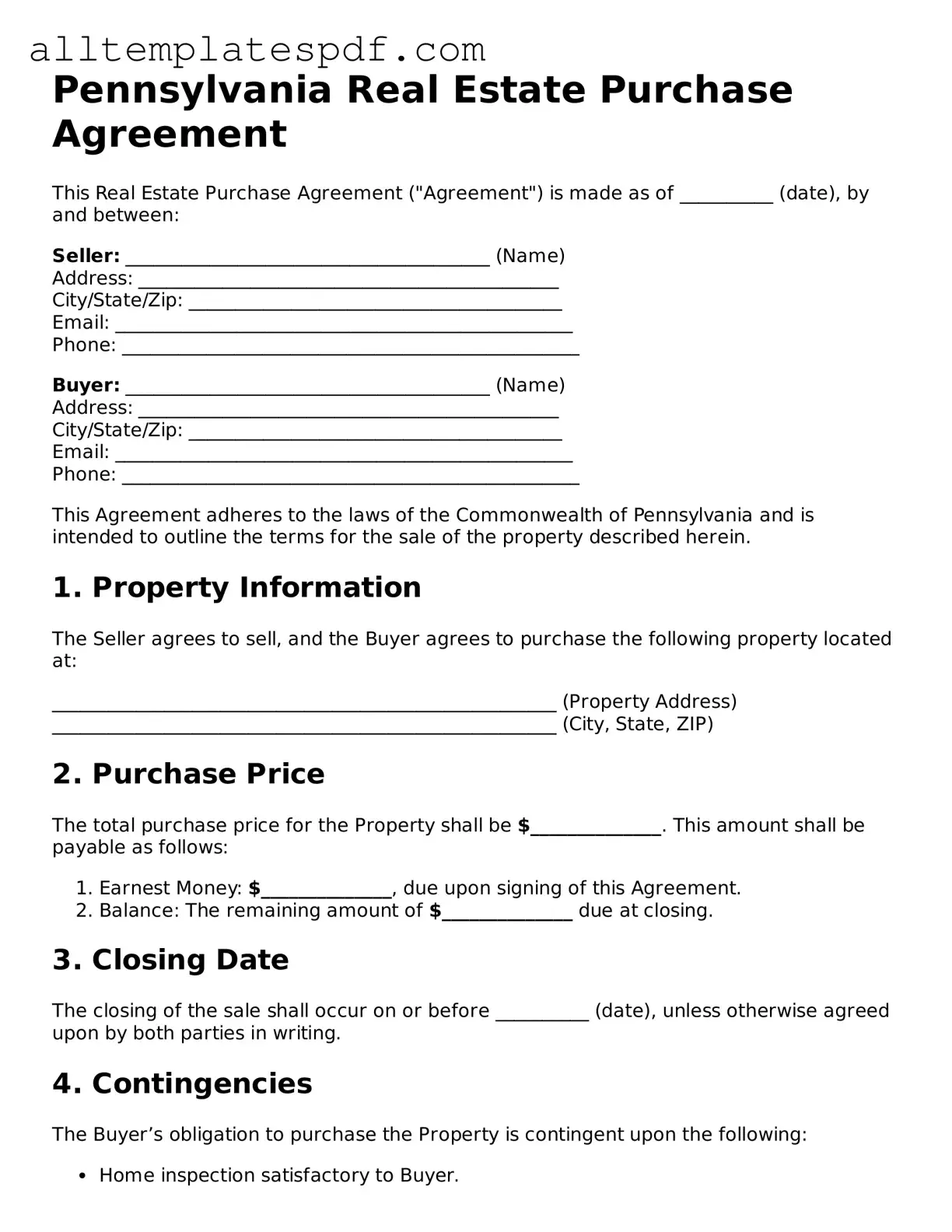Blank Real Estate Purchase Agreement Template for the State of Pennsylvania
The Pennsylvania Real Estate Purchase Agreement is a crucial legal document that outlines the terms and conditions under which a property will be sold. This form serves as a binding contract between the buyer and seller, detailing essential elements such as the purchase price, financing arrangements, and contingencies. Understanding this agreement is vital for anyone involved in a real estate transaction in Pennsylvania.
To ensure a smooth buying or selling process, it is important to fill out the form accurately. Click the button below to begin.
Open Editor
